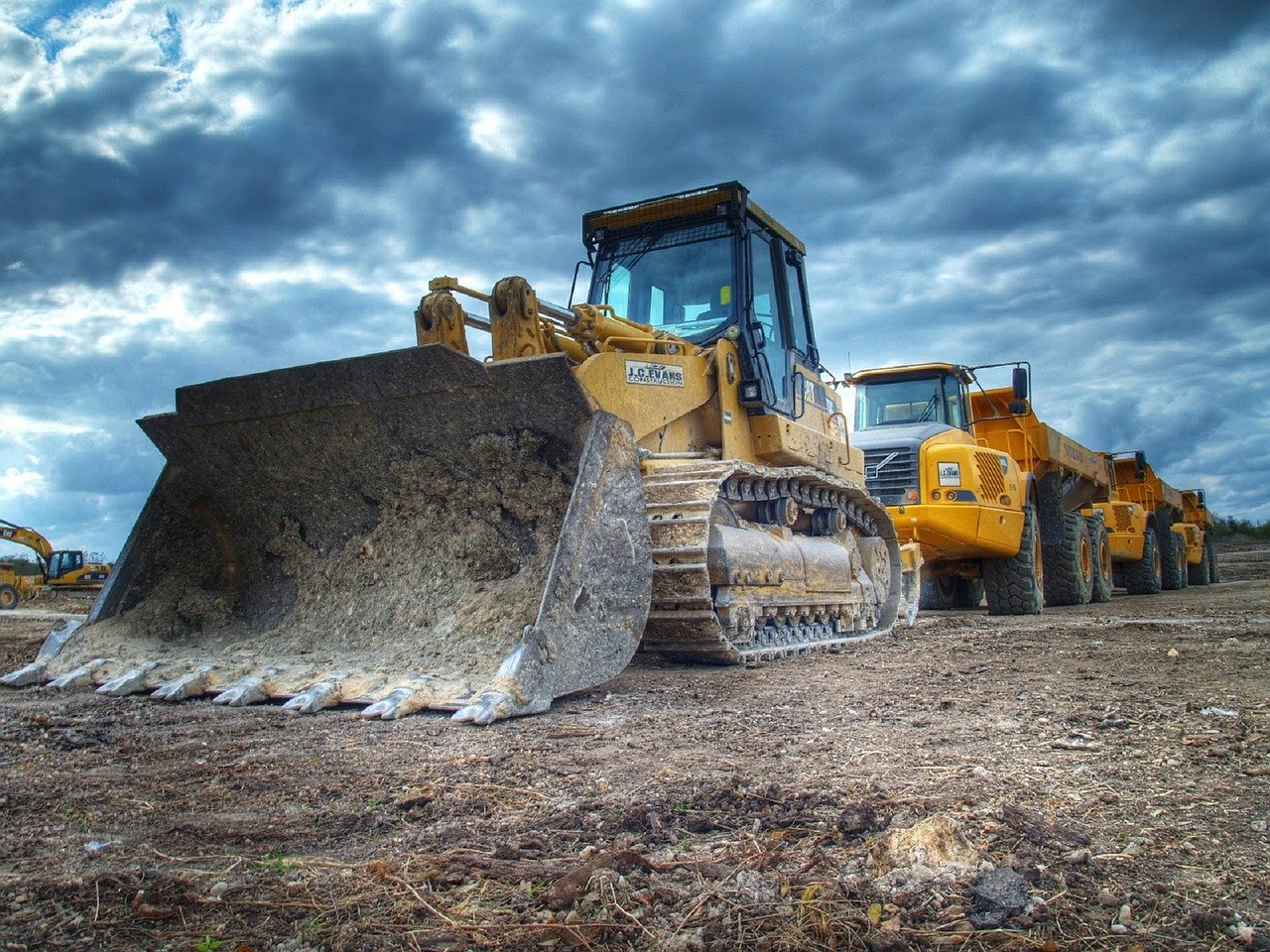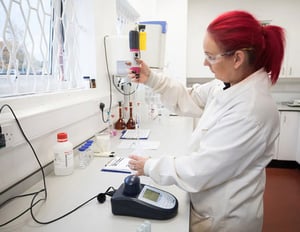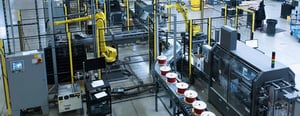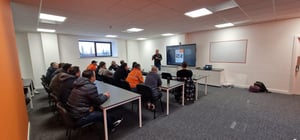Rainbow Rare Earths plc (LON:RBW) has today announced its unaudited results for the six months ended 31st December 2019.
Highlights
· New Chief Executive Officer (George Bennett) appointed in the period
· Revised strategy announced – based on a much larger operation targeting at least 20k tonnes of concentrate per annum for 20 years
· Exploration and other test work being undertaken – JORC Resource targeted for April 2020
· Current operations being revised and optimised to achieve breakeven, to mitigate production losses
· Production in the period modest – 100t concentrate exported and sold – reflecting operating challenges which triggered changes to strategy
· EBITDA loss for the period US$2.3 million (6 months to 31 December 2018: US$1.4 million)
· 10 mining claims obtained in Zimbabwe
· Coronavirus impacts to production limited at the present time – but the situation is being monitored closely
CEO Statement
Coronavirus/COVID-19
It is impossible to begin a discussion at the present time without covering the impact of coronavirus on Rainbow and its operations.
Rainbow’s operations are in Burundi, which, at the time of writing, has had no officially recorded instances of coronavirus. Our operations continue to run largely as normal, however international travel restrictions have meant that senior management are currently remaining at site for extended rotations, to ensure continued productivity.
If restrictions on travel continue for a prolonged period, or if the Burundi government imposes stricter controls or lockdowns, it is possible that production and development activities would be disrupted. It is also likely that the disruption to the financial markets will make fundraising more challenging, which in turn may delay the Company’s ability to deliver on its development milestones.
The Company has issued health guidelines to all its staff, to minimise risks to wellbeing. Above all, the health of our staff, as well as their families and communities, must be our key priority, and we will not hesitate to take appropriate measures as required.
Most people will be aware that the situation continues to change rapidly, and updates will be sent out as soon as appropriate.
Production and sales in six months to 31 December 2019
In the six months to 31 December 2019, 114 tonnes of concentrate were produced (6 months to 31 Dec 2018: 564 tonnes, and 12 months to 30 June 2019: 788 tonnes). 100 tonnes of concentrate were exported and sold in the period.
This fall in production reflected the operational challenges at Gakara that had been experienced since late 2018, and which led to a revision to the operating strategy in the period.
The mining of ore since the commencement of operations at the mine in early 2017 had consisted of the extraction of almost pure vein materials using hand tools, with the removal of waste being undertaken using a small fleet of largely rented mining equipment. Mining had commenced at Gasagwe, with the second pit, Murambi, beginning operations in December 2018.
Tonnages of ore mined declined from the advent of the rainy season in September 2018, despite two pits being operated in parallel, and highlighted the limitations of this initial approach.
In particular, the rented equipment struggled to perform in wet conditions, resulting in significant periods of downtime following each rain event. In addition, the lack of geological information on the orebody meant that ore tonnages were unpredictable, with veins seen at surface pinching and swelling, or even proving discontinuous, as mining descended.
Following a review of operations in August and September, mining was suspended at Gasagwe in order to focus on Murambi, which was felt to be more prospective in the near term. In addition, the mining fleet was reduced to six rented vehicles (five haul trucks and a dozer) in addition to an owned excavator, and two TLBs. Orders were placed in the period for five new haul trucks to replace the rented fleet, as well as a grader. The grader arrived in January 2020, and the trucks arrived in March 2020. Both the trucks and the grader will improve operating efficiency and significantly reduce rental costs.
The methodology for extracting ore was also revised during the period. Instead of mining veins by hand, assisted by mechanical equipment for waste removal, a more traditional bulk mining approach to extracting ore was trialled, whereby zones of mineralisation were identified and mined by excavator, prior to being transported by truck to the plant for treatment.
As a result, the total ore tonnage mined in the period increased to 3,900 tonnes (compared with 580 tonnes in the six months to 30 June 2019), albeit at much lower grades (typically between below 5%).
Additional focus was placed on catching up on waste removal. In total, 246k tonnes of waste was removed to dumps in the period, a substantial increase compared with the previous six months, during which just 80k tonnes were removed.
Revised near-term production strategy
Production at Gakara has focused on deposits consist of stockworks of narrow, high-grade veins. The veins themselves are almost pure bastnaesite/monazite, and require minimal treatment to upgrade to the 54% minimum grade of Total Rare Earth Oxide required for export and sale.
However, the veins are variable in form and thickness, and as a result production has proven difficult to predict from one bench to the next.
A key priority for near-term production, therefore, is to explore methods to be able to identify vein formations below surface level, in order to allow a reliable mine plan to be formulated. Conventional drilling has limited effectiveness for vein stockworks, but may be used in conjunction with other methods under consideration (including ground-penetrating radar, channel boring, and surface trenching).
Production levels cannot be stated with certainty, however once a mine plan has been drawn up, based on reliable geological data, and utilising the new mining equipment, concentrate production is expected to increase to more than 100 tonnes per month, which is expected to cover the production costs following recent cost saving measures.
Achieving break-even profitability at production level represents a considerable downgrading of expectations from the existing production set-up, however reflects a realistic assessment of the productive capacities of current operations. In addition, continuing operations represents an important means of meeting the Company’s social obligations towards its current workforce and local community. The goal will be to maximise production, beyond these levels if possible, provided this does not impact the longer-term prospects of for the mine.
Ultimate strategy – designing a larger mine capable of producing 20k tonnes of concentrate per annum
The near-term production strategy seeks to satisfy the Company’s in-country social obligations, thus keeping the mining permit in good order, while eliminating production losses as soon as practicable.
However, the ultimate strategy of the Company remains the design of a much larger operation, capable of producing in excess of 20k tonnes of concentrate at 54% TREO per annum for at least 10 years (ideally up to 20 years or more).
The extent of mineralisation across the permit is clear from the number of separate occurrences of mineralisation already found at surface. The Company is confident that there exists more than enough material to supply a processing facility sized at 20k tonnes per annum output. However, the work needs to be undertaken to define the deposit, and a first JORC-compliant Resource is expected to be announced in April 2020.
This Resource will be initially based on Kiyenzi – which is a breccia deposit, in which rare earth mineralisation has been dispersed more widely. This results in an orebody that is lower in grade, but much wider than the high-grade vein stockworks seen elsewhere. Importantly, it is also therefore more amenable to diamond core drilling, as well as being simpler to mine, which is why it is expected to form the cornerstone of the larger mining strategy.
An initial JORC Resource is expected to be announced in the coming weeks, based on the analysis of drill cores which were taken during 2018 but not yet fully analysed. Thereafter, a further drilling campaign will be undertaken later in 2020, with an enlarged Resource to be declared subsequently.
At the same time, mineralogical and metallurgical analysis is being undertaken on various ore deposits, in order to ascertain the most appropriate treatment methodology for the larger plant. Initial studies indicate that the mineralogy of the deposit is highly benign, and that crushing and gravity separation are likely to be all that is required to liberate the mineralisation and produce a high-grade concentrate (note that many rare earth projects require flotation or other more complex beneficiation techniques, which carry significant capex and opex costs).
Corporate
The Company concluded a major fund-raise in July 2019, which raised a net US$5 million while also satisfying a number of outstanding creditors (including a convertible loan from an affiliate of Lind Partners).
I was appointed as Chief Executive Officer on 28 August 2019, having participated in that placing as an investor.
However, the losses incurred during 2019 were greater than had been expected, and a larger portion of these funds were required for working capital. As a result, and as we continue to define the exploration and expansion strategy, it is expected that further funding will be needed, although the Company is keen to minimise dilution at prevailing share prices, which reflect wider market conditions as well as Rainbow’s own challenges.
I have underlined my confidence in the project by acquiring further shares during the period (together with the Company’s Chairman, Adonis Pouroulis), and by extending an unsecured loan of US$1 million.
The Company is currently discussing new financing plans with a number of prospective investors (both new and existing shareholders), and will provide an update shortly once its decision has been finalised.
In November 2019, the Company announced that it had obtained 10 new mining claims in Zimbabwe. These permits, which relate to carbonatite-type bodies, are at an early stage, however for limited cost, initial exploration work will be put into place to establish their prospects.
Rare earths (‘RE’) market
RE prices fell in the period and at 31 December 2019, and Rainbow’s basket was 14% lower than at 1 July 2019. Short-term movements in RE prices tend to be driven by inventory levels in China, which accounts for the majority of RE production and consumption.
Nevertheless, the long-term prospects for rare earths, particularly Neodymium and Praseodymium (‘NdPr’ – which together account for more than 80% of Rainbow’s basket price), remain very strong. Demand for rare earth magnets is set to increase substantially in response to the growth in manufacture of electric vehicles (as well as electric bikes, buses, trains, and trams), wind turbines, hi-tech electronics, and other strategic and defence uses.
While electric vehicle purchases continue to increase, the rate of growth has been somewhat slower than had been forecast by many. However, there is no doubt that the car manufacturing industry will very soon be dominated by electric vehicle (‘EV’) manufacturing – global auto makers (including VW, Daimler, Hyundai, Ford, as well as Tesla) have announced investment of over US$300 billion in EV-producing facilities. This, together with government-led targets, and natural consumer demand, means that the replacement of hydrocarbon-burning combustion engines with electric drive motors is now inevitable.
It is worth pointing out that each new EV consumes between 1-2kg of NdPr, and that forecast EV production to meet government EV targets alone is expected to account for an increase in demand for NdPr of between 25-90% by 2030. At the same time, few new sources of RE production are likely to come online in the next few years – putting Rainbow in a strong position to take advantage of this demand increase.
George Bennett
Rainbow Rare Earths Chief Executive Officer
Financial Review
Overview
The six months to 31 December 2019 represented a period during which production at the Gakara project was disappointing, and, as a result, further losses were incurred. At the same time, the Company raised money (mainly from an equity placing of US$5 million in July 2019) to invest in exploration activities and new mining equipment, as well as to cover a working capital shortfall.
Income statement
100 tonnes of concentrate were sold in the six months to 31 December 2019, at an average net price (after accounting for marketing fees and handling costs deducted at source) of US$1,560 per tonne (six months to 31 December 2018: 650 tonnes at US$1,892 per tonne). Revenue was therefore US$0.2 million in the period, compared with US$1.2 million for the six months to 31 December 2018 (and US$1.5 million for the year ended 30 June 2019).
Royalty and transport costs of US$46k (six months to 31 December 2018: US$208k) included the cost of transporting the concentrate from the mine site to the port of Mombasa, as well as the government royalty of 4%.
Production costs totalled US$1.6 million (six months to 31 December 2018: US$1.6 million), including the cost of running the processing plant (US$0.2 million), mining costs (US$0.8 million), and local administrative and support costs in Burundi (US$0.6 million).
Stockpile movement of US$22k represents the net decrease in the value of the concentrate stocks held during the period, as this amount is shown separately from cash production costs.
Administration costs totalled US$0.8 million, slightly higher than the six months to 31 December 2018 (US$0.7 million), reflecting some one-off costs associated with the changes in strategy following the appointment of a new Chief Executive in August 2019.
EBITDA in the period was a loss of US$2.3 million, compared with a loss of US$1.4 million for the six months to 31 December 2018 and a loss of US$3.4 million for the year to 30 June 2019.
Share-based payments were minimal in the period, as a result of charges in respect of all existing employee share options having been incurred over their two-year vesting periods, and no new employee share options having been issued since August 2017.
Depreciation was charged on vehicles and office equipment only, with the bulk of capitalised costs in respect of the Gakara project either having been impaired at 30 June 2019, or having been transferred to Exploration and Evaluation assets in the period (see below).
Finance income, primarily FX gains on currency movements, was US$0.6 million, reflecting in particular currency gains that the Company was able to benefit from through its acquisition of Burundian Francs at competitive rates, while finance costs (including the interest on the Finbank loan facility) amounted to US$0.1 million.
Pre-tax losses were therefore reported of US$1.8 million, compared with losses of US$3.1 million in six months to 31 December 2018 and US$12.1 million for the year to 30 June 2019.
Income tax expenses primarily related to withholding taxes, and were less than US$0.1 million.
Total loss after tax was US$1.9 million, compared with losses of US$3.2 million in six months to 31 December 2018 and US$12.3 million for the year to 30 June 2019.
Balance sheet
During the year, the Company revised its operating strategy, and reclassified the existing mining approach as trial mining, with the Kabezi processing plant to be considered a pilot plant. Capitalised costs in respect of the Gasagwe and Murambi pits, as well as the Kabezi processing plant, were impaired in full at 30 June 2019, however the Company now believes that US$6.2 million of capitalised mine development costs, which relate to the Gakara project as a whole, should now be considered Exploration and Evaluation assets, rather than Property, Plant and Equipment. This assessment reflects the fact that work on the project as a whole is considered an early phase of the much larger operation currently being designed, rather than an economically viable operation within its own right. A transfer of US$6.2 million was made during the period to reflect this revised management view.
US$59k of exploration costs were capitalised during the period, as well as US$0.7 million of fixed assets (the largest element of which was a prepayment of US$0.4 million in respect of five new haul trucks and a grader). The additional fixed asset additions relate to capitalised development costs at Gakara, where work continues to extend the Company’s understanding of its ore bodies.
Current assets at 31 December 2019 totalled US$1.0 million, up from US$0.7 million at 30 June 2019, as a result of holding additional cash at the period end.
Current and non-current borrowings totalled US$1.5 million, of which USS$0.8 million related to the Finbank facility (an overdraft which was transformed into a loan in the period), and US$0.6 million related to trade and other creditors (reduced from US$1.1 million at 30 June 2019).
Cash flow statement
The Rainbow Rare Earths cash balance at 31 December 2019 was US$553k (30 June 2019: US$119k), an increase of US$434k in the period.
This movement reflects cash operating losses of US$2.3 million, a reduction in working capital creditors of US$1.2 million (mainly trade and other creditors settled following the July equity placing), and capitalised fixed asset (exploration and property, plant and equipment) of US$0.7 million.
These outflows were primarily funded by the July 2019 placing, which raised US$4.3 million net of transaction costs.
Going concern
The Directors have a reasonable expectation that the Company and the Group have adequate resources to continue in operational existence for the foreseeable future, although acknowledge that there continues to exist a material uncertainty that may cast doubt over its ability to do so, in that the Company requires additional funding in order to meet working capital requirements and to deliver on its expansion and exploration programmes over the next 12 months. Nevertheless, they continue to adopt the going concern basis in preparing the Condensed Consolidated and Company Financial Statements. For further detail refer to the detailed discussion of the assumptions outlined in note 2(a) to the Condensed Consolidated Financial Statements.
Cautionary Statement:
The business review and certain other sections of this Half Yearly Report contain forward looking statements that have been made by the Directors in good faith based on the information available to them up to the time of their approval of this report. However, they should be treated with caution due to inherent uncertainties, including both economic and business risk factors (not least of which is the impact of the coronavirus), underlying any such forward-looking information and no statement should be construed as a profit forecast.
Risks and uncertainties
There are a number of potential risks and uncertainties inherent in the mining sector which could have a material impact on the long-term performance of the Company and which could cause the actual results to differ materially from expected and historical results. The Company has taken reasonable steps to mitigate these where possible. Full details are disclosed on pages 26-27 of the Annual Report for the year ended 30 June 2019. The risks and uncertainties are summarised below:
· Production issues
– The production of rare earth mineral concentrate involves a series of processes, from the mining of the ore at the mine sites near Mutambu, to the processing of material at the Kabezi plant.
– Mining operations are subject to a number of risks, including mechanical outages, supply issues (eg fuel), interruptions due to weather and soil conditions, among many others.
· Geological risk
– Company published a JORC Resource for four of the pits within the Gakara deposit, with the rest of the deposits representing an Exploration Target. In a subsequent review for the Competent Persons’ Report published in July 2019, MSA held the view that the geological information was only sufficient to report an Exploration Target under JORC.
– The variations in form and direction of the vein stockwork seen at Gakara are inherently difficult to predict with accuracy.
– It is possible that the quantity of rare earths present in the licence area is less than management expectations with resulting impacts on production in the short and longer term.
· Rare earth prices
– The Company produces rare earth mineral concentrate which is sold to TK on market price less deductions and a discount (negotiated by TK with each end customer).
– Rare earth prices have been volatile in the past. If the underlying rare earth basket price falls, this reduces revenue and will impact the profitability of the mine.
– The current discount rate is approximately 70%, however this may vary dependent on the arrangements ThyssenKrupp negotiates with any new customers or as terms are renegotiated.
· Financing risk
– The Company currently forecasts that additional funding will be required in order to deliver its development plans (drilling, test work and mine fleet capex), as well as for general working capital requirements.
· Soil instability in mining areas and/or access routes
– Heavy rains during the rainy season (Oct-May) can lead to land slippages, which could lead to production interruption in the event that these impacted the mining areas or access routes
· Civil unrest
– Burundi has experienced civil unrest, most recently in 2015. Any subsequent instances of civil unrest could impact the operation of the mine, including its ability to obtain supplies or export its material, or even access its bank accounts in country.
· Currency controls
– The Company receives proceeds in US dollars, which, are repatriated to an account in the Burundi Central Bank.
– Burundi has experienced shortages of foreign currency reserves in the past, and it is therefore possible that access to US dollars held in country might be difficult. This would affect the Company’s ability to meet ongoing foreign currency obligations (eg corporate costs, and any debt payments in US dollars).
The impact of coronavirus clearly constitutes a major risk that has arisen since these risks were set out in the Annual Report for June 2019. The situation is changing rapidly at the present time, and a great deal of uncertainty exists regarding the effect of COVID-19 on global markets as a whole, as well as on Rainbow specifically.
Potential risks relating to COVID-19 include:
· Impact on the operation of the mine – including the need to shut down operations for health reasons or to comply with government orders; difficulty in obtaining supplies; disruption to transport for key personnel
· Difficulty in raising finance – the impact of the virus on the markets has been significant in recent weeks and may mean that sources of funding are harder to obtain, or more expensive
Other than this, there have been no significant changes to the risk profile during the first half of the year.
Directors’ Responsibility Statement
We confirm that to the best of our knowledge:
a) the Condensed set of Interim Financial Statements has been prepared in accordance with IAS 34 ‘Interim Financial Reporting’;
b) the interim management report includes a fair review of the information required by DTR 4.2.7R (indication of important events during the first six months and description of principal risks and uncertainties for the remaining six months of the year);
c) the interim management report includes a fair review of the information required by DTR 4.2.8R (disclosure of related parties’ transactions and changes therein); and
d) the condensed set of interim financial statements, which has been prepared in accordance with the applicable set of accounting standards, gives a true and fair view of the assets, liabilities, financial position and profit or loss of the issuer, or the undertakings included in the consolidation as a whole as required by DTR 4.2.4R.
This Half Yearly Report has been approved by the Board and signed on its behalf by:
George Bennett
Chief Executive Officer
27 March 2020










































